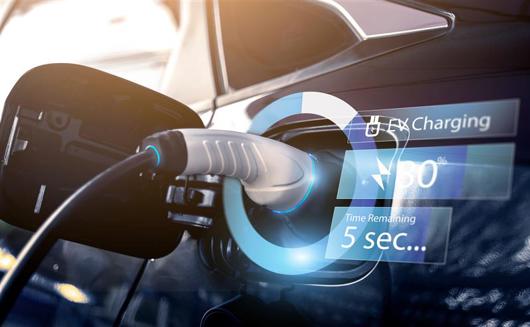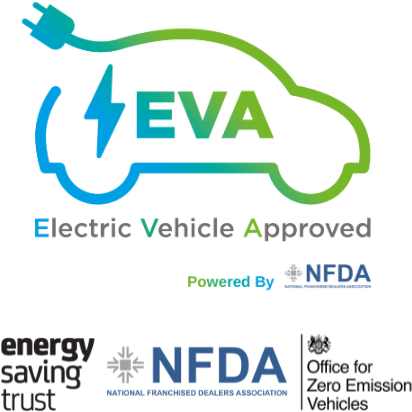
Volkswagen Offers Up to £1,200 Cashback for Electric Van Buyers
Volkswagen Commercial Vehicles is rolling out a new incentive this October to encourage van drivers to switch to electric. Throughout the month, customers purchasing any of Volkswagen’s all-electric vans will receive £100 cashback each month for a year, adding up to a total of £1,200.
While electric van sales have reached record highs in 2025, they still fall short of government targets. Volkswagen’s latest offer forms part of a wider industry effort to accelerate the adoption of electric vans among both business and private buyers.
The cashback promotion applies across Volkswagen’s full range of electric commercial vehicles, including the e-Transporter and both cargo and passenger versions of the ID. Buzz.
The e-Transporter represents Volkswagen’s first fully electric one-tonne panel van. It offers up to 1,000kg of payload and can tow up to 2,300kg, making it a capable choice for tradespeople, small business owners, and fleet operators alike. Buyers can choose between 134bhp and 215bhp electric motors, both powered by a 64kWh battery that delivers up to 201 miles of range on a single charge.
For those seeking a more stylish and versatile electric van, the ID. Buzz Cargo blends retro design with a car-like driving experience. All Cargo models qualify for the cashback, from the entry-level 59kWh version (200-mile range, 168bhp) to the powerful 335bhp all-wheel-drive variant with a 79kWh battery.
Private customers aren’t left out, either. The offer extends to the ID. Buzz LWB, one of the most popular seven-seat electric vehicles on the market. Buyers can also choose the six-seat long-wheelbase or five-seat standard versions, all eligible for the same cashback incentive.
Volkswagen’s latest deal is another step in its push to make electric mobility more appealing and more affordable for van drivers across the UK.
Polestar Celebrates Five Years in the UK with Record-Breaking Festival
Polestar has celebrated its fifth anniversary in the UK with its biggest-ever customer event, the Polestar Festival. Held at Bicester Motion on September 13th, the event brought together over 1,000 enthusiasts to mark the occasion and witness the UK debut of the new Polestar 5, a sleek four-door performance Grand Tourer.
Since delivering its first car in 2020, Polestar’s UK presence has grown rapidly, with more than 45,000 vehicles now on British roads. To commemorate the milestone, 180 Polestar owners came together to form the world’s largest Polestar logo, a striking 170-metre-wide display created entirely from customer cars.
Hosted by renowned presenter and motoring enthusiast Vicki Butler-Henderson, the festival offered a full day of activities, including EV technology showcases, test drives, simulators, and expert discussions covering range, design, and sustainability in the electric era.
The highlight of the day was the unveiling of the all-new Polestar 5, aligning perfectly with the brand’s fifth anniversary, a true “five for five” celebration.
Reflecting on the event, Matt Galvin, Managing Director of Polestar UK, expressed his gratitude and optimism for the brand’s future:
“It was incredible to see so many customers and friends of the brand on Saturday, and the reception to the new Polestar 5 has been astonishing. Polestar UK is growing fast and has a very exciting future ahead of it, and I would like to thank all our customers for being part of this success story.”
With record attendance and an unforgettable showcase, Polestar’s fifth anniversary marks both a celebration of its rapid rise in the UK and a bold look toward its electric future.
Lamborghini Boss: Combustion Engines Will Stay for at Least Another Decade
Lamborghini’s chief executive, Stephan Winkelmann, has reaffirmed that the brand’s customers still crave “the sound and the emotion” of internal combustion engines — and the company intends to keep them alive in its cars for at least the next ten years.
Winkelmann said that waning enthusiasm for electric vehicles has opened a window for Lamborghini to focus on hybrid technology instead. The Italian supercar maker will decide within the next month whether its long-planned new model, the Lanzador, will go fully electric or adopt a plug-in hybrid powertrain.
While defending Lamborghini’s environmental responsibility, Winkelmann acknowledged that, as a low-volume luxury manufacturer, the company’s direct impact on global emissions is limited.
A subsidiary of the Volkswagen Group, Lamborghini currently produces three core models. The Revuelto and Temerario are high-performance plug-in hybrid supercars, each combining a powerful petrol engine with electric motors. Although capable of short all-electric runs, their primary focus remains on performance and emotion.
The third main model, the Urus, is a luxury SUV offered as both a plug-in hybrid and a conventional petrol variant. It’s less extreme than Lamborghini’s supercars but accounts for more than half of the brand’s total sales.
Lamborghini also builds the Fenomeno, a limited-edition “super-sports” car capable of exceeding 215mph. Only 30 units will be produced, each priced at a minimum of €3 million (£2.6 million) before taxes.
The company had previously announced plans for an all-electric successor to the Urus, originally slated for release in 2029. That project has now been delayed until at least 2035. Similarly, the Lanzador GT, once planned as Lamborghini’s first all-electric grand tourer, is now under review, with its future uncertain.
As the supercar world navigates the transition to electrification, Lamborghini appears committed to a hybrid-led path, preserving the signature sound and visceral driving experience that define the brand, at least for the foreseeable future.






